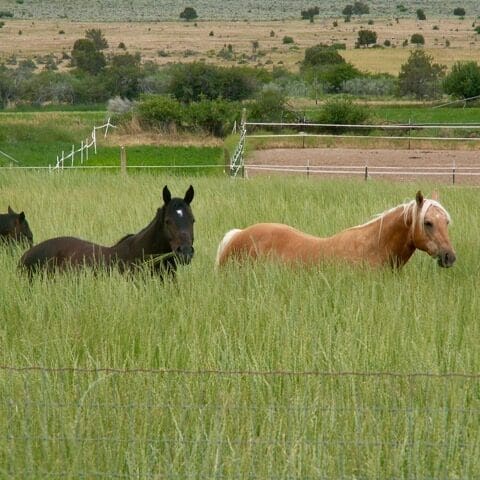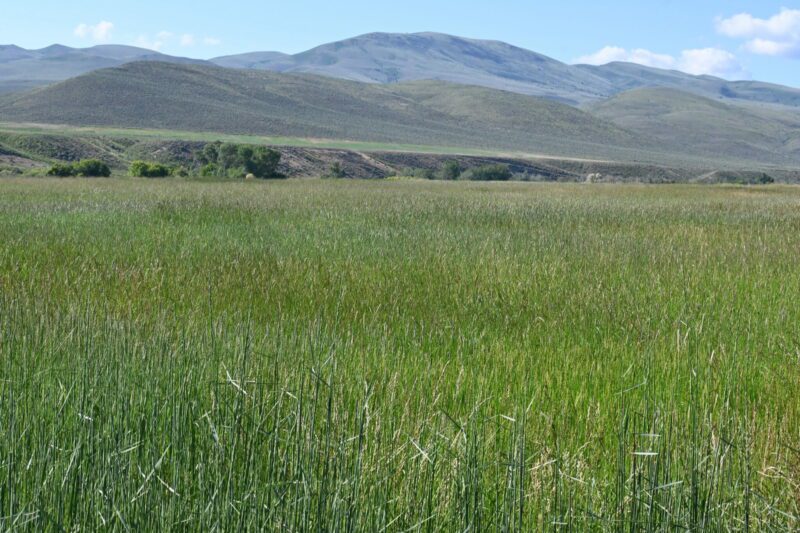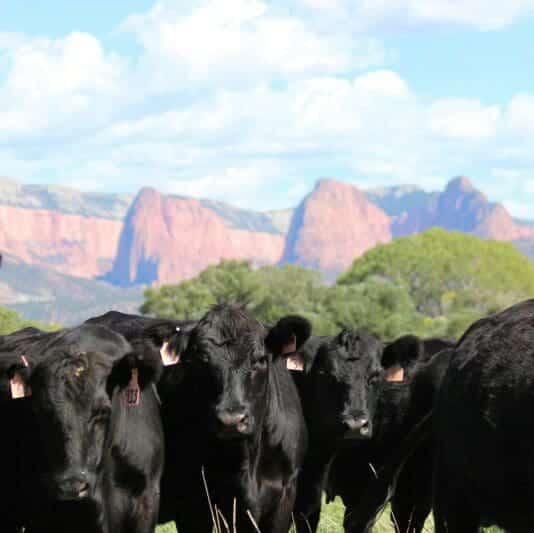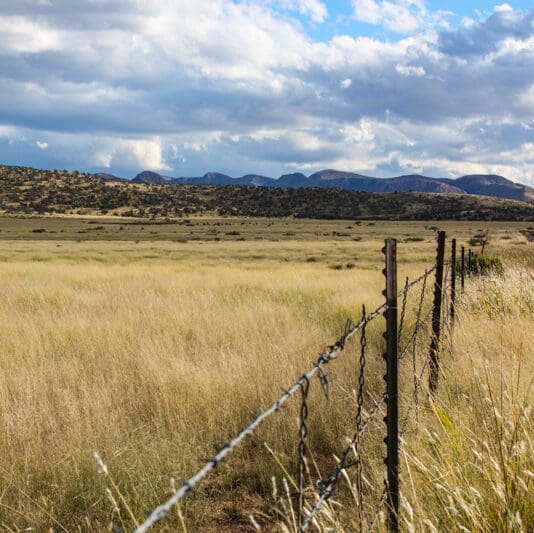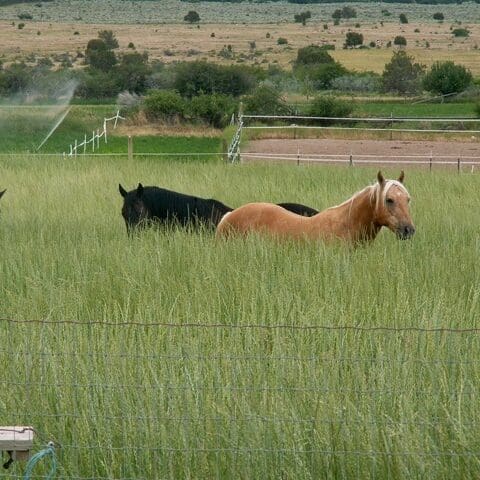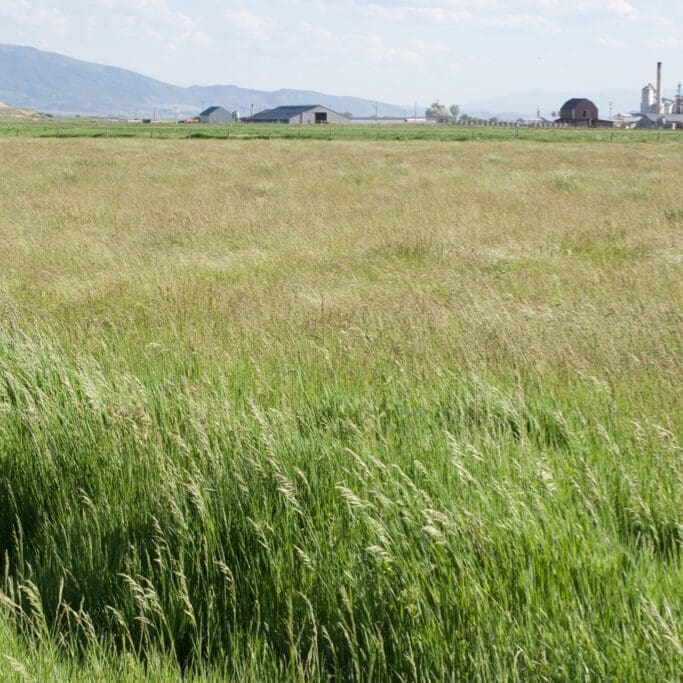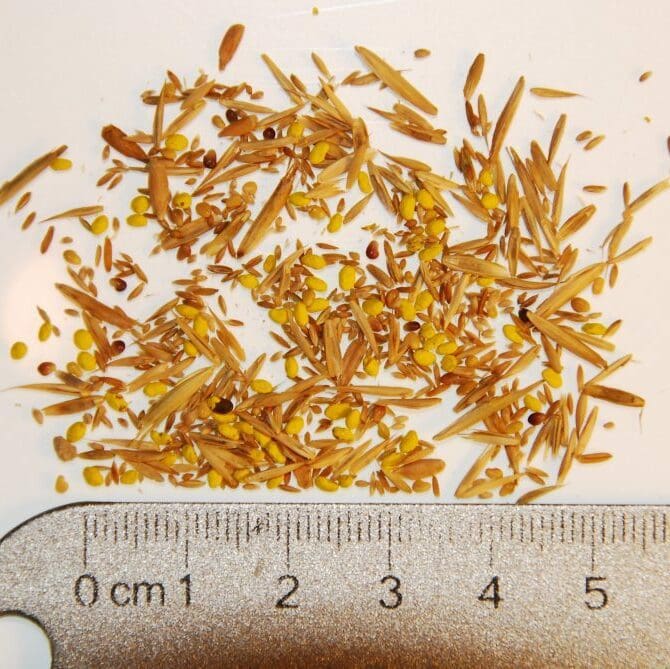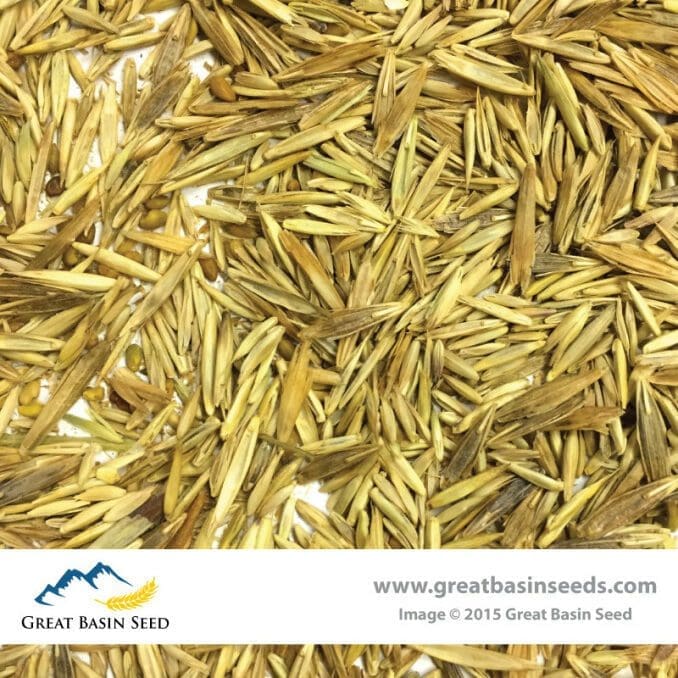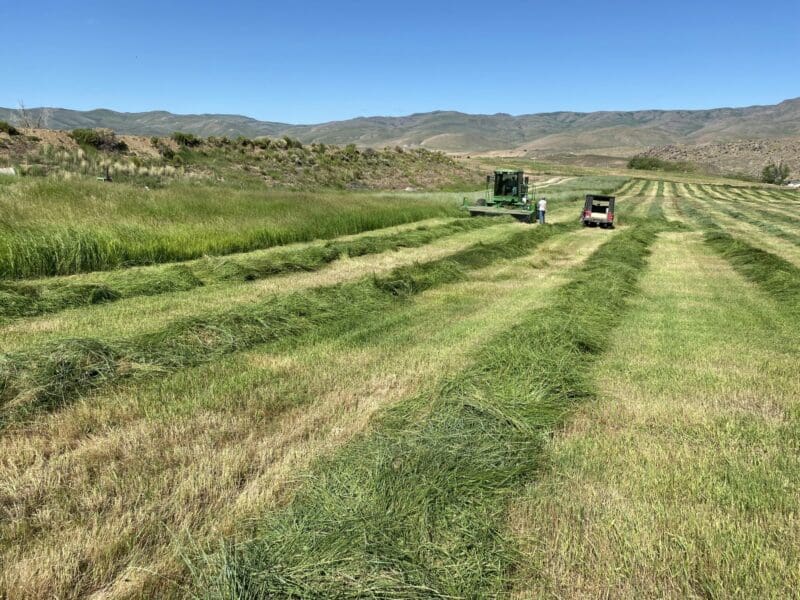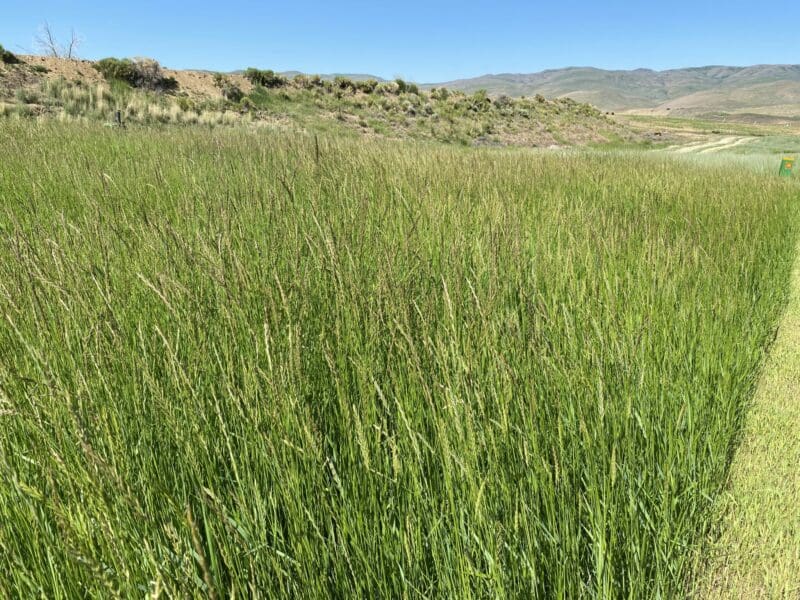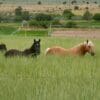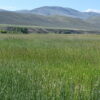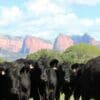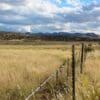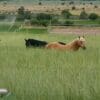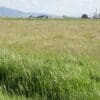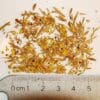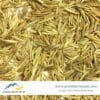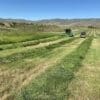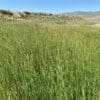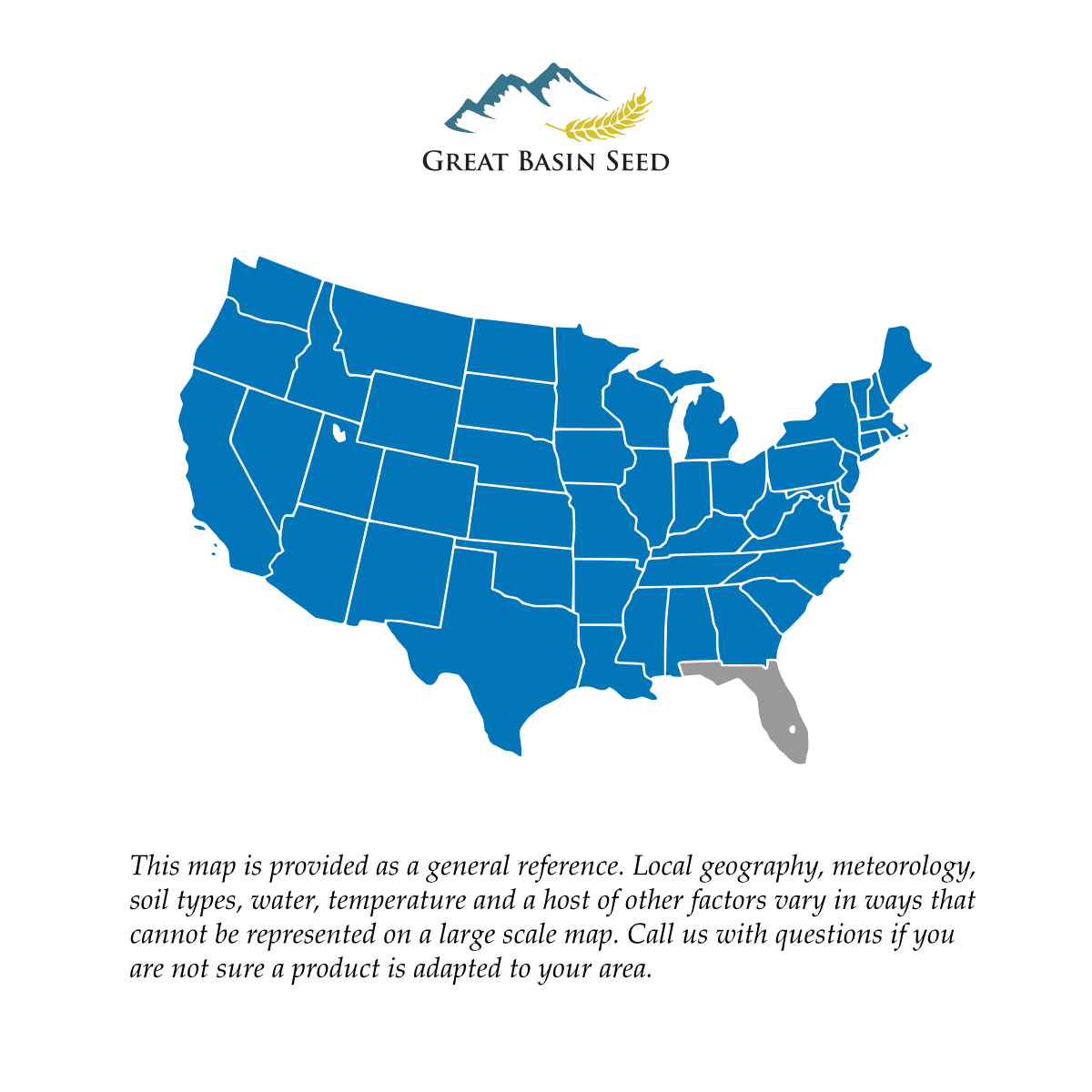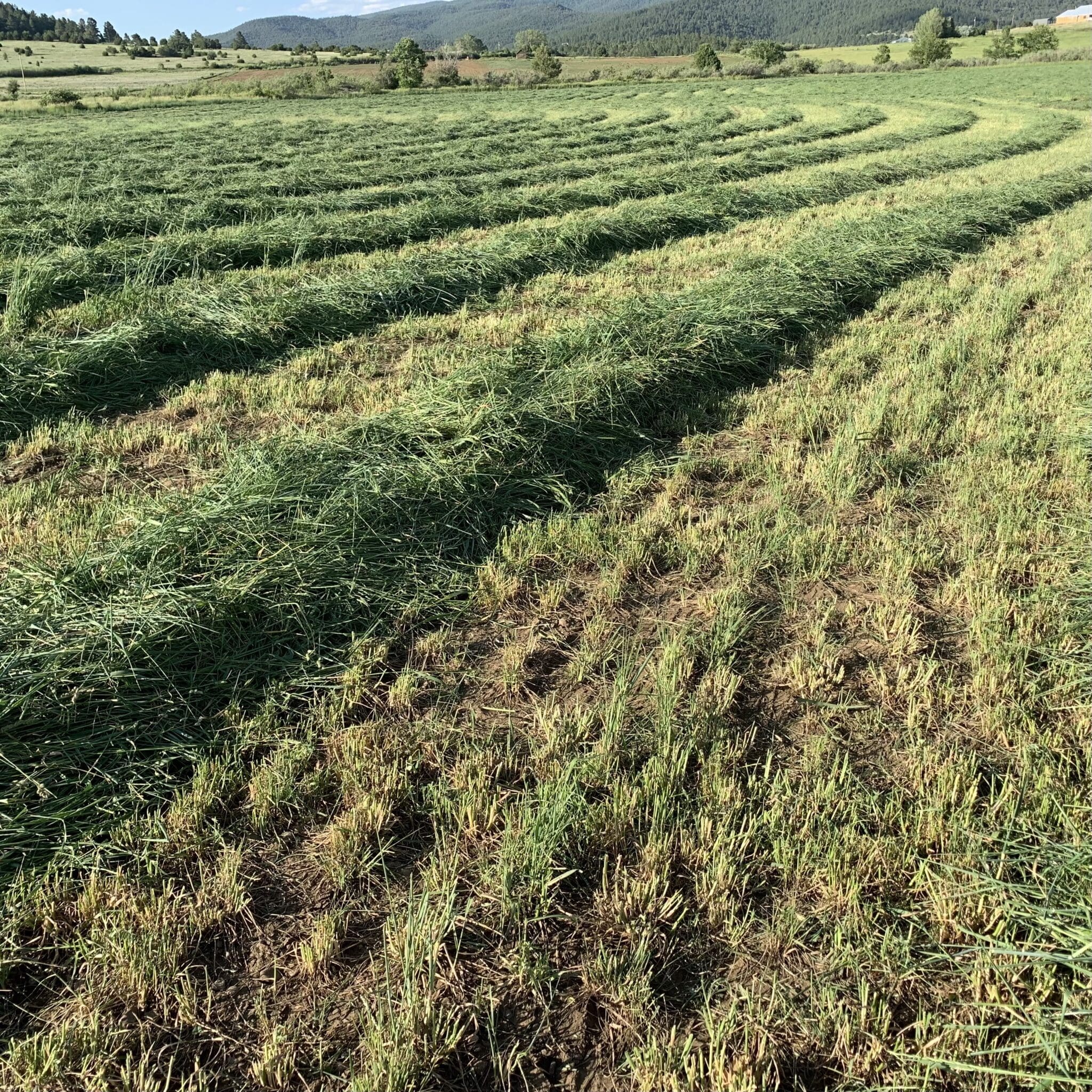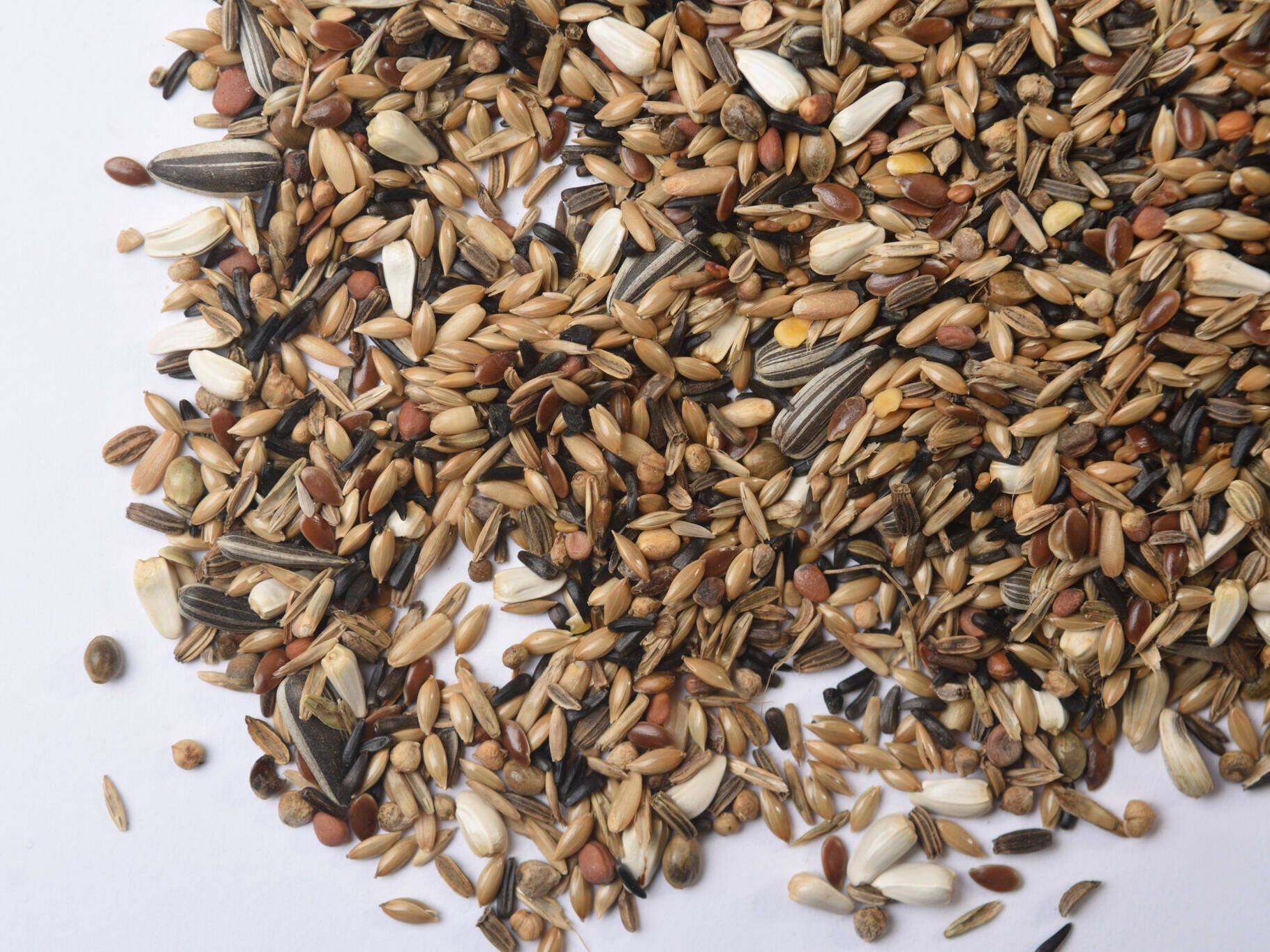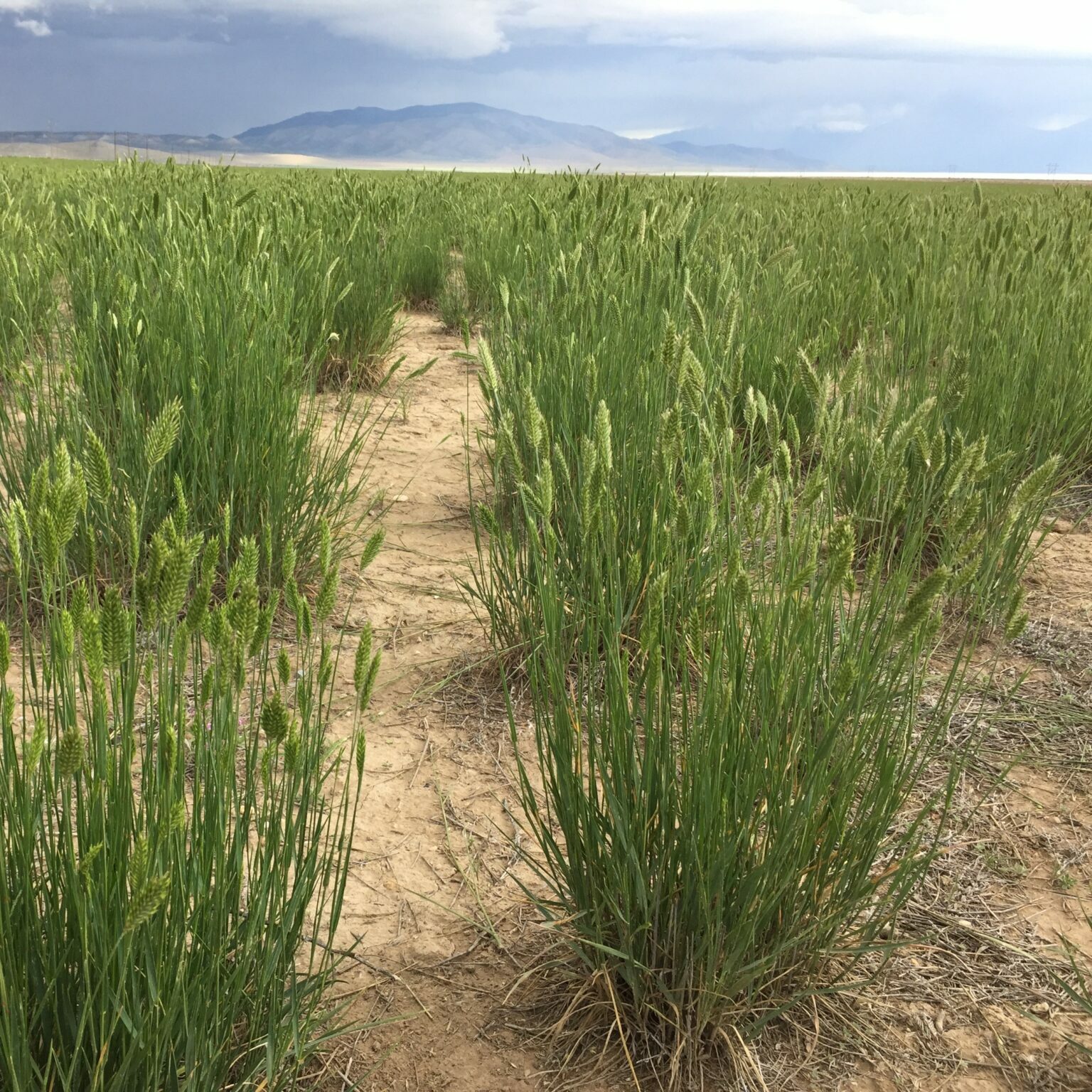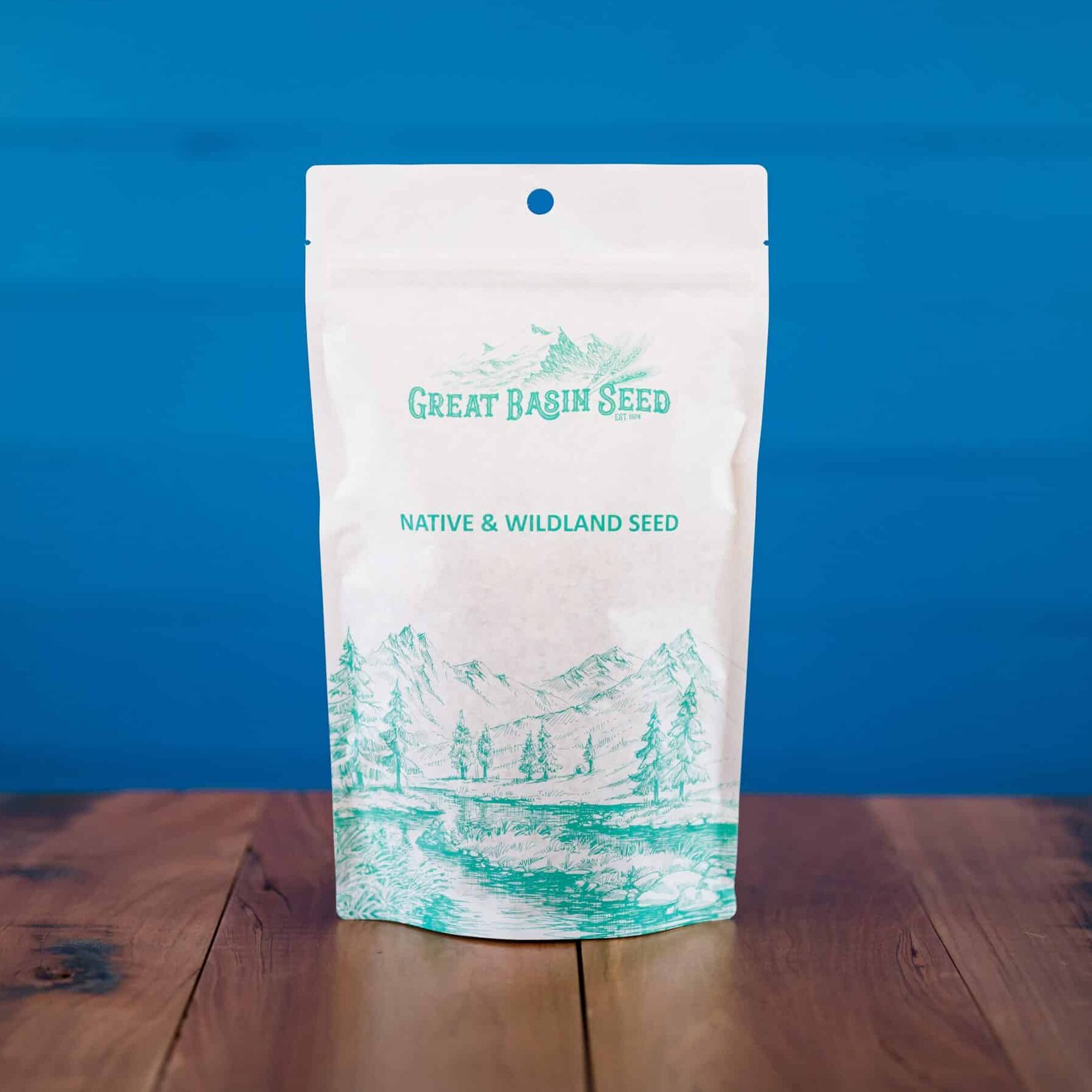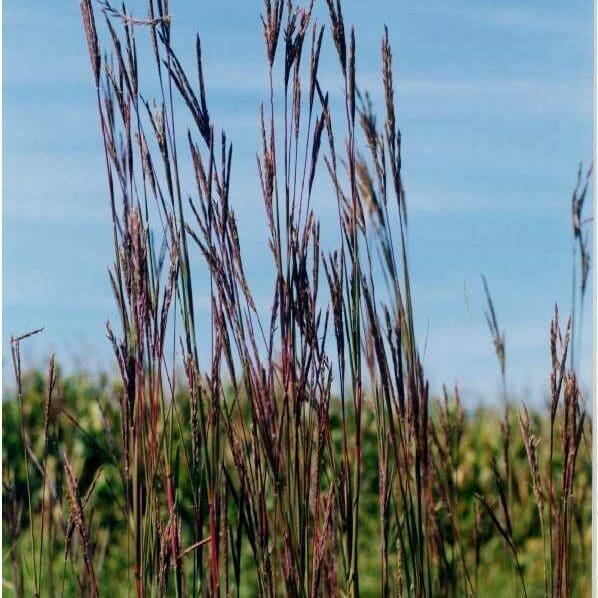Dryland Pasture Seed Mix
Designed for farm, ranch and range with no irrigation. Use in areas with 11-13 in. of annual precip. or sprinkler/flood irrigation is present.
- Excellent for grazing
- Can be cut and bailed where water is sufficient
- Will compete with weeds
- Minimum order quantity of 10 pounds
- For zones with 10-13″ annual precipitation
- For zones with 14+ inches annual precipitation try:
Min. to Max. Annual Precipitation
40in.
Average Max. Height
Designed for farm, ranch and range with no irrigation. Grows well on the annual precipitation available in most arid States excluding parts of the Sonoran and Mojave desert. Not suited for states east of the Mississippi River. Requires a minimum of 10″ annual precipitation. With good grazing practices and sufficient precip it has been baled at least once annually. Can be fall and winter grazed. Effective for disturbed sites and erosion control. Dryland Pasture Grasses usally compete well with weeds.
General Description:
Dryland Pasture Seed Mix is designed for farm, ranch and range where no irrigation is present. It grows well on the annual precipitation available in most areas of the United States excluding very arid climates like the Sonoran and Mojave desert. It will grow on a minimum of 10″ annual precipitation. If some sprinkler or flood irrigation is present or annual precipitation averages 11-13 inches yield will improve. We have selected dryland pasture grasses that persist in droughty conditions and provide high quality forage.
In areas of 12+ inches of annual precipitation dryland pasture grass has been and bailed at least once annually. Can be fall and winter grazed as pasture. It is an excellent dual-purpose product adapted to a wide range of dryland ecosystems. It is efficient and multi-purpose.
- Wheatgrass
- Orchardgrass
- Bromegrass
- Wildrye
- Alfalfa
For specific species in mix please call our office as mix changes per batch depending on what we have in stock.
Uses:
Dryland Pasture Mix is effective for disturbed sites and erosion control. Competes well with weeds, especially when it is sown in late summer or fall, giving it the upper hand against weedy spring annuals.
Planting Conditions:
Our Dryland pasture mix prefers a poorly drained soil. The varieties do not survive well in sandy soils. It can be planted in areas that receive as little as 10″ of annual precipitation. When planting it is advised to scratch the surface of the soil with a harrow. After using a harrow walk on the soil and if boot sinks deeper than a 1/2″ then firm the soil by driving on top of it then plant the seeds. This will ensure that seeds don’t sink deeper in the soil once moisture is introduced.
For more information on planting conditions give our office a call as it varies per planting site.
Planting Time:
For dryland seeding late fall planting is the best time. When planting late fall ensure that night temperatures are freezing and day temperatures are cool. This will allow the seeds to lay dormant throughout the winter, germinating in the spring once the soil temperatures have reached between 50-60 degrees.
For an early fall planting you need at least 8 weeks of good growth before your first hard freeze. Keep seeds watered so the soil does not dry out (high frequency, low duration) until grass is about 4-6″ tall, then switch to a low frequency, high duration cycle.
For a spring planting ensure that the seed is planted after the last frost date. Keep watered so the soil does not dry out (high frequency, low duration) until grass is about 4-6″ tall, then switch to a low frequency, high duration cycle.
Summer plantings are successful in the Great Plains if sown before summer monsoons/rainfall.
Seeding Rate:
Plant no deeper than 1/4″
Drill: 16lb. per acre
Broadcast: 20lb. per acre
Best results are acheived by correct and careful drill seeding or broadcast seeding. Broadcast is the most common sowing method. If the drill method is used, take care to plant no deeper than 1/4″. Prepare the soil with some form of light disturbance such as a spike-tooth harrow. Methods will vary from site to site and will depend upon your equipment and size of your planting area.
Firm seed-to-soil contact will enhance establishment, as will rolling or packing, but do not bury pasture grass seed.
Refer to the analysis tag on each bag for planting instructions and additional helpful information. For more details click the “additional information” tab above.
FAQ: Is this product is suitable for lawn or turf in yards and outlying areas? We don’t recommend Dryland Paste Mix as turf. It can be used as ground cover, and the distinction is one of semantics and aesthetics. The root clumps of the bunch grasses make it difficult (but not impossible) to mow. The species are not fine stemmed and the plants are generally too tall for mowing once established. Dryland pasture seed mix is a good choice for outlying areas that are not heavily traveled, or where coverage is desired over bare ground, where little mowing will occur, or for weed control.
For additional information see our Dryland Pasture Mix blogpost.
Customer Photo
A freshly cut field of Dryland Pasture Mix in windrows, ready to bale.
Customer submitted photo, Fiona S. from NM.
The graphic above should provide a good visual reference of proper seeding depth. Note: The roll/pack step is highly recommended (but not necessary) with the broadcast seeding method. We do NOT recommend you roll/pack after drilling unless you are absolutely certain your drill is set to the shallowest possible drill depth – no more than .25″. A drill depth set too deep will result in buried seeds, poor germination and poor establishment – or failure.
Left: Ideal soil prep and proper broadcast method seed depth. The seeds have good soil contact on an even seed bed.
Right: Large dirt clods result in poor soil contact and uneven establishment. To the best of your ability, prepare an even, disturbed seed bed. What is “correct” or “ideal” will vary with your circumstances. In a range situations or on rocky ground the soil in the left photo is unrealistic.
Pasture mixes &Correct Sowing Methods
Correct sowing method is crucial for the establishment of healthy pasture. Few things have so direct an effect on success – or failure. The following methods are recommended:
Broadcast + Roll (BEST): Broadcast seed on a prepared seed bed. In small plots this is easy done by hand. For medium plots, a fertilizer broadcaster works well. In large-scale seedings a tractor/truck/SUV mounter fertilizer spreader works well. After broadcasting, walking on the area works in small areas and accomplishes the same goal as a roller. In med-large scale seedings, compact the soil surface with a push-roller or a roller mounted to a vehicle or tractor. The goal of the roller is to “press” the seed into the soil surface, ensuring the best possible soil contact.
Broadcast (GOOD): Broadcast seed on a prepared seed bed. In small plots this is easy done by hand. For medium plots, a fertilizer broadcaster works well. In large-scale seedings a tractor/truck/SUV mounter fertilizer spreader works well. DO NOT attempt to bury the seed after broadcasting.
Drilling (GOOD, BUT MUST BE DONE CORRECTLY): There are countless brands and styles of drills. Each are set to their specific make and model – there is no “universal” setting. Set your drill to the desired seeding rate and lift disks to barely scratch the surface. DO NOT bury the seeds. One of the leading causes of establishment failure is sowing too deep.
Custom Seed Mixing
Your Seed, Your Way
Don’t see what you like? Do you have specific needs? Give us a call – we can mix up any custom recipe!
Since 1974 we have prided ourselves on addressing the specific needs of our customers. If you have unique soil, water, environmental or end-use needs we can work up a mix that will work best for you.
If you’ve been shopping around, you know that pasture mixes come in different styles, shapes, sizes and PRICES. A good pasture mix is designed for a specific application or environment. When shopping for dryland pasture mix we hope you’ll do some homework. Whether you buy it from us or another vendor, the advise below will help you make an educated decision and give you real value and good return on your investment.
Step 1: Define “dryland” for YOUR conditions
“Dryland” is loosely defined as annual precipitation with no supplemental irrigation. It varies greatly by state and ecoregion. You can find your annual precipitation and other useful weather data at http://www.usclimatedata.com. Once you know your annual precipitation zone you can determine the species – and mixes – that will work in your area.
Step 2: Know the precipitation minimums of the seed you plant
Forage and range grasses all have different precipitation requirements. Siberian wheatgrass, for example, will survive on a little as 5″ annual precipitation and is adapted to the most arid locations in north america. Most clovers, on the other hand, require about 16″ of precipitation. In many western states locations the only way to achieve that much precipitation is through irrigation. The form below will give you generalizations for the species adapted to zones with 11″ or less annual precipitation.
Step 3: Know the difference between a low price and real value
Resist the urge to buy the cheapest seed mix available. As a general rule irrigated species are cheaper than dryland species. Some vendors cheapen their seed mixes by adding items that are not really dryland species. If you live in an area with less than 13″ annual precipitation do not plant seed mixes that claim to be “dryland” and contain the following species:
-
• Annual Ryegrass
• Tall Fescue
• Clovers
• Timothy
• Orchard grasses (except Paiute)
If you have plenty of annual precipitation then the above species are commonly used and very good for pasture. But if you live in a 10″ precipitation zone your seed with either never germinate at all, or it will emerge then quickly die off. Make sure the species in your mix are adapted to your climate.
Step 4: Understand the percentages of species in a Mix:
Check the analysis tag for species percentages when you compare pasture mixes. The example below is taken from a box-store “dryland pasture mix”. It is priced inexpensively at $2.85 and widely marketed for Utah and Idaho. Utah and Idaho are predominantly 10-12″ annual precipitation:
-
35% Tall Fescue
22% Paiute Orchardgrass
20% Annual Ryegrass
15% Festulolium
3% Pubescent Wheatgrass
2% Crested Wheatgrass
Paiute Orchardgrass, Pubescent Wheatgrass and Crested Wheatgrass are well adapted to Utah and Idaho and are appropriate for a drylands pasture mix. But their combined add up to only 27% of the mix! Tall Fescue and Festulolium both require in excess of 16″ annual precip to be productive and persist. Annual ryegrass is, as the name states, and annual – it will die off after the first year. The end result is that 70% of this mix will never emerge or die off after the first year.
The Bottom Line:
Our dryland pasture mix is a premium product blended for superior performance. We do not cheapen it with fillers. It is more expensive than other competitors, but if you look closely and compare you will see that there is tremendous value built into our product. We believe in selling seed for a purpose and goal, not a price point.

Quick Product Facts
| Growth Height: | |
|---|---|
| Max Sowing Depth: | |
| Min. Precipitation: | 10 inches. Yield will increase with the availability of additional water. |
| Broadcast Rate: | 20lbs. per acre |
| Drill Seed Rate: | 16 lbs. per acre. DO NOT DRILL DEEPER THAN 1/4" |
| Best Sowing Time: | Fall (Best); Spring (Good when conditions permit) |
| Seed Count | Approx. 145,000. Variable, depends on mix ratio |
| Origin: | |
| Lifespan: | |
| Sun & Shade Tolerance: | Full Sun , shade OK |
